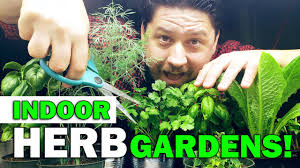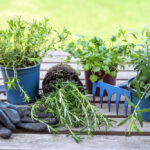In today’s fast-paced world, more and more people are turning to indoor herb gardening as a way to bring a touch of nature into their homes. Whether you’re a seasoned gardener or just starting out, this comprehensive guide will walk you through everything you need to know to create a thriving indoor herb garden.
Getting Started: Choosing the Right Herbs
The first step in creating your indoor herb garden is choosing the right herbs. When selecting herbs for indoor cultivation, it’s important to consider factors such as light requirements, space constraints, and personal preference. Some popular herbs that thrive indoors include basil, mint, parsley, cilantro, and rosemary.
Creating the Perfect Environment
Once you’ve selected your herbs, it’s time to create the perfect environment for them to thrive. Indoor herb gardens require adequate light, water, and air circulation to flourish. Place your herbs in a sunny window where they will receive at least six hours of sunlight per day. If natural light is limited, consider supplementing with a grow light.
Choosing the Right Containers
Choosing the right containers is essential for indoor herb gardening success. Opt for containers with adequate drainage to prevent waterlogged soil, and be sure to choose pots that are large enough to accommodate the root systems of your herbs. Terra cotta pots are a popular choice for indoor herb gardening as they allow for proper airflow to the roots.
Planting and Maintenance
Once you have your herbs, containers, and growing environment in place, it’s time to plant! Fill your containers with well-draining potting soil and plant your herbs according to their individual spacing requirements. Be sure to water your herbs regularly, keeping the soil evenly moist but not waterlogged. Additionally, be sure to fertilize your herbs periodically to ensure healthy growth.
Harvesting and Using Your Herbs
One of the joys of indoor herb gardening is being able to harvest fresh herbs whenever you need them. Harvest your herbs regularly by snipping off stems as needed, being sure to leave enough growth for the plant to continue thriving. Fresh herbs can be used in a variety of culinary dishes, from soups and salads to marinades and sauces.
Conclusion
Indoor herb gardening is a rewarding and enjoyable hobby that allows you to bring a taste of the outdoors into your home. By following the tips and guidelines outlined in this ultimate guide, you’ll be well on your way to creating a thriving indoor herb garden that will provide you with fresh herbs year-round.
FAQs
1. What are the best herbs for indoor gardening?
– Some of the best herbs for indoor gardening include basil, mint, parsley, cilantro, and rosemary.
2. How much light do indoor herbs need?
– Indoor herbs require at least six hours of sunlight per day. If natural light is limited, consider supplementing with a grow light.
3. How often should I water my indoor herbs?
– Indoor herbs should be watered regularly, keeping the soil evenly moist but not waterlogged. Be sure to water whenever the top inch of soil feels dry to the touch.
 |
| The Ultimate Guide to Indoor Herb Gardening |
4. Do indoor herbs need fertilizer?
– Yes, indoor herbs benefit from periodic fertilization to ensure healthy growth. Use a balanced, water-soluble fertilizer according to package instructions.
5. Can I grow multiple herbs in the same container?
– While it’s possible to grow multiple herbs in the same container, be sure to choose herbs with similar growing requirements and provide adequate space for each plant to thrive.



